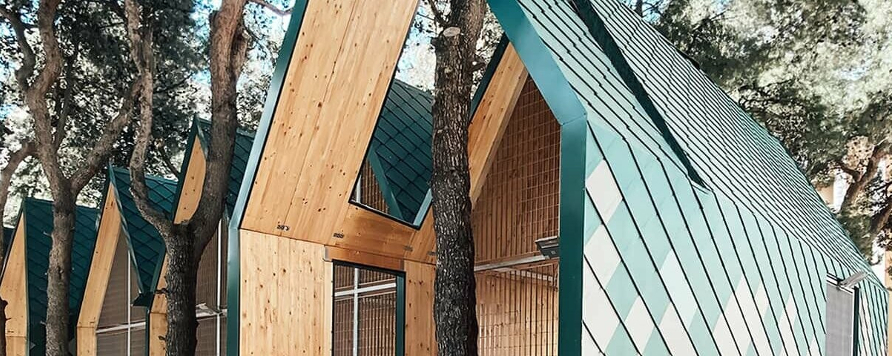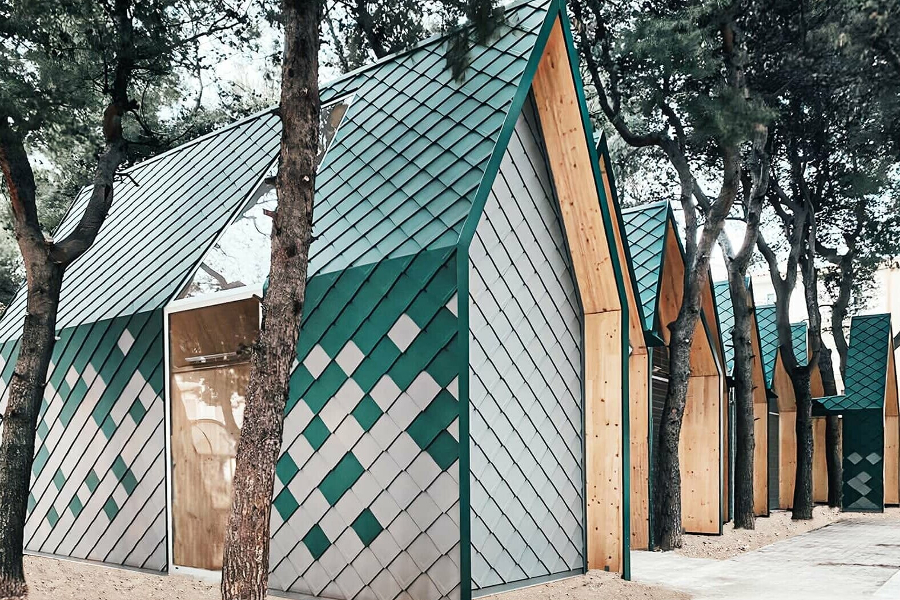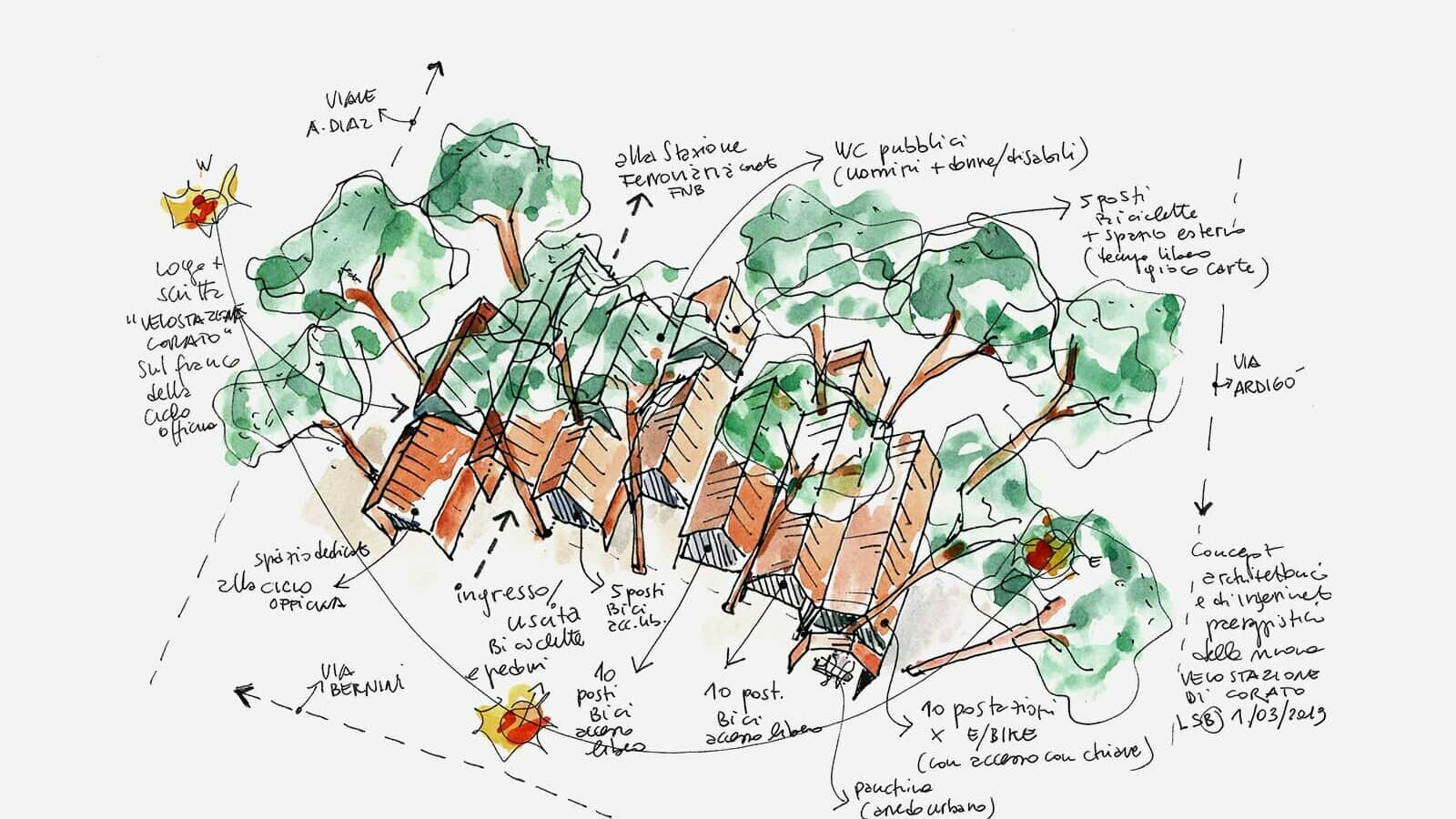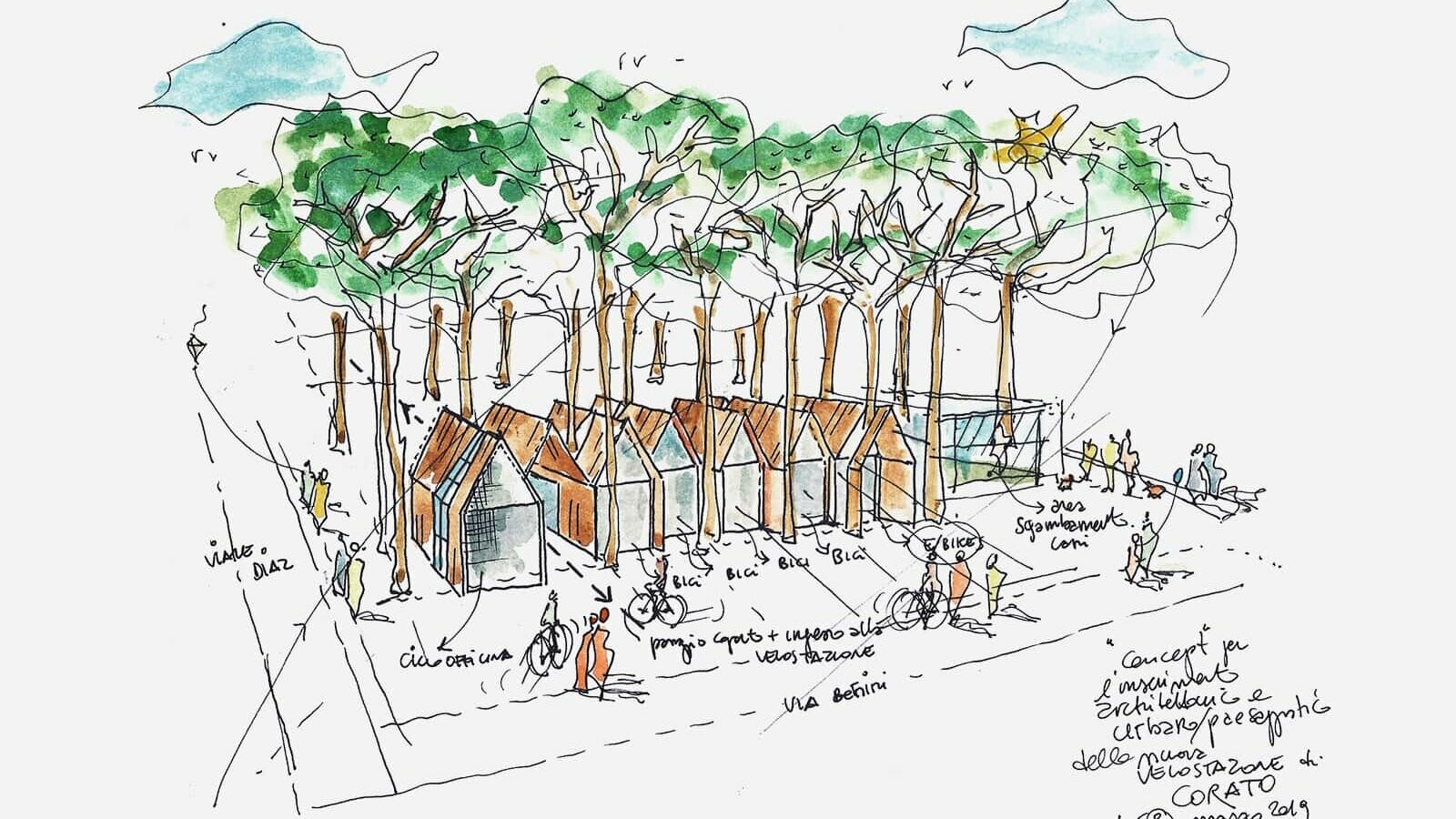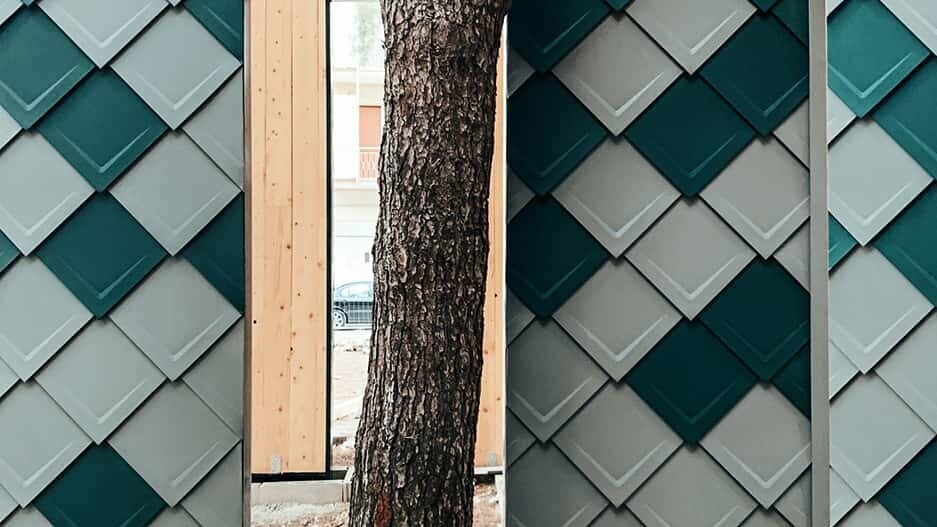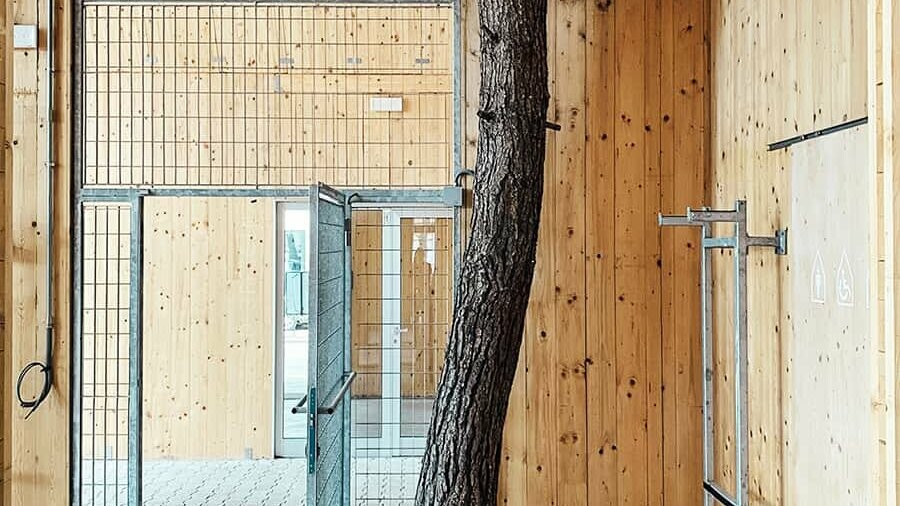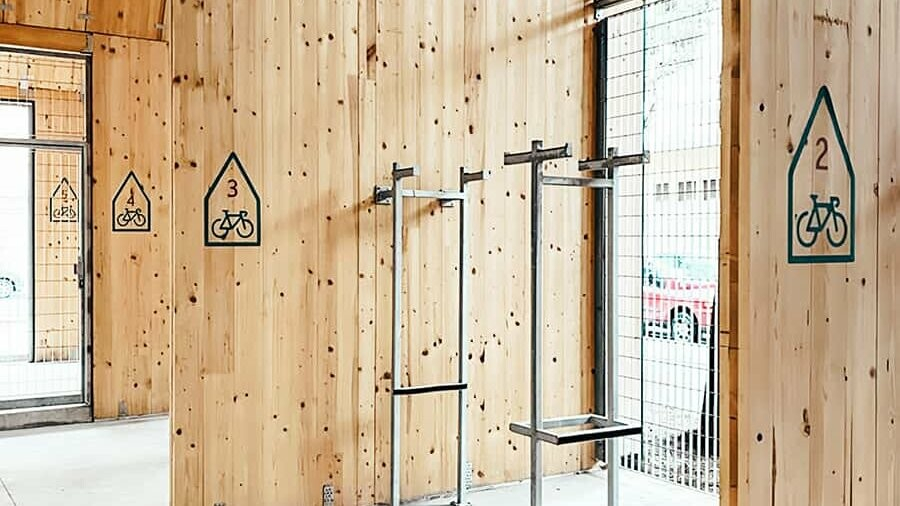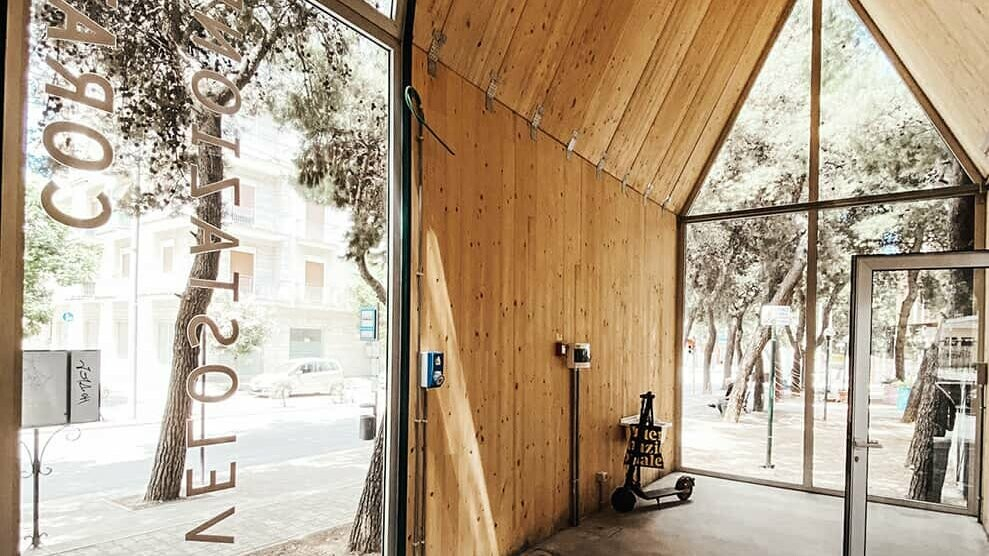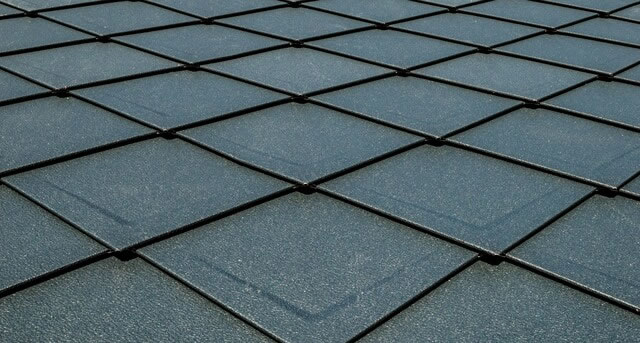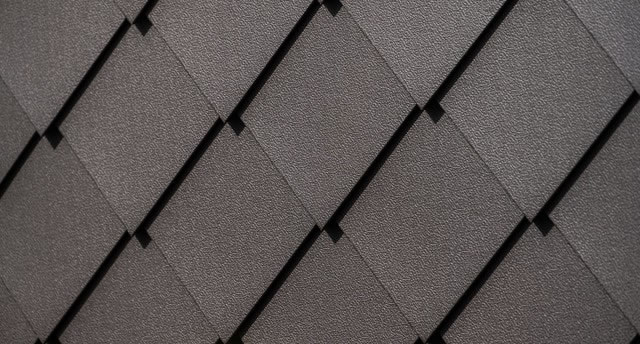Like pine cones in the forest
Architecture that lets trees live, formal influences from the far north and a sustainable building material that scores both from an aesthetic and a recycling perspective: With its new bicycle station designed by LSB Architetti Associati, the Municipality of Corato in the province of Bari (IT) is going all out, which is why the project landed the second place in the Premio Nazionale Go Slow 2021 that is dedicated to supporting soft mobility.
Genius Loci
“In the best case, architecture emerges from the history of a city or environment,” the Turin-based architect Giuseppe Dell’Aquila tells us with conviction. It is a conclusion that has stuck with him in the course of his work on various infrastructure, sustainability and landscape design projects over the past 25 years. These projects also include the Nuova Linea ferroviaria Torino–Lione, a route for a high-speed train line that involves building an approximately 57 km long tunnel under a mountain. Over 15 years, his involvement in linear infrastructure gave rise to something that would also become essential for his design of the bicycle station in Corato: a strong environmental awareness. In Dell’Aquila’s words: “I’ve always advocated for a more sustainable use of resources and am a proponent of architecture that consciously blends into its natural environment.” His credo is clear: building with nature instead of building where nature is or once was.
"Convivenza" - "Coexistence"
Mr. Dell’Aquila also uses the term “convivenza”, “coexistence”, to clarify what he is referring to here: “An architect is responsible for ensuring that a new building coexists with the existing structure. To do so, he must find the necessary balance, which can only be achieved if he captures the genius loci, the spirit of a place.” He also claims that the further you go back in history, the more contrast you can create. This is exemplified by the Parc de la Villette, for instance, the second largest park in Paris, which flaunts 26 bright red buildings designed by Bernhard Tschumi.
Rethinking mobility
With the bicycle station in the Southern Italian town of Corato, these approaches meet a community experiencing a conscious change in mobility: Thanks to its commitment, a new understanding of the daily use of transport is being established here. Away from the much-loved and much-used car towards a more environmentally conscious way of getting around that is good for body and soul: the bicycle. For this purpose, the municipality of Corato even received 250.000€ from the European Regional Development Fund, according to which the project “contributes to increasing sustainable mobility in urban and suburban areas”. The municipality awarded the contract to the architectural office LSB Architetti Associati and thus to proven specialists in this area.
Many roads lead north
In a shady, green park on the concentric ring road Viale A. Diaz, the new bike station is waiting to be discovered by its users. Only 150 m away from the railroad station and 750 m from the centre of Corato, you immediately understand the underlying concept: One can also do one’s daily commute easily, sustainably and quickly by using public transport. The aesthetics of the station’s seven hut-like units are decisively shaped by the moss green and light grey rhomboid PREFA roof tiles. They tower amidst the pine trees, some of them even grow through the structure, and offer a total of 90 parking spaces for bicycles and e-bikes, including charging stations.
You can tell at first glance that the building is determined by the trees, whose preservation was part of the concept. In this way, the architectural office turns to models of the Nordic School that have also left their marks in Italy. Thus, the nordic pavilion in Venice designed by Sverre Fehn and the bicycle station in Corato particularly have one thing in common: The trees were there before the architecture, penetrate it and continue to exist through it. The pointed roof shape of the huts, which is not typical for the region of Apulia, was apparently also “an idea from the north” and clearly stands out in the historic urban fabric of romanesque buildings and medieval cathedrals. The leading architect sees this “contamination”, as he calls it, as a decidedly positive means of weaving in a supra-regional style locally and still producing a coherent architecture that enters a conscious dialogue with its surroundings.
The right material for every mantra
With the aim of creating a “very light, sustainable object”, LSB Architetti Associati decided to use a substructure made of cross-laminated timber (X-Lam) and rounded off their design concept with a scaly façade cladding made of PREFA rhomboid tiles. “Since the material can be recycled as often as desired, this aspect was clearly central for our choice. The term ‘recycling’ has practically become a mantra at our office. There were also aesthetic motivations for us: We wanted the surface structure of the façade to resemble that of a pine cone, and the rhomboid tile made this possible. By the way, 90% of the station consist of PREFA,” reveals the architect.

A town is redesigning itself
In the future, the bicycle station in Corato will be used by commuters who work or study in Bari, located 40 km southeast of the town, and those who are drawn to nature for recreational purposes: For it is connected to the bicycle paths of the Alta Murgia National Park, which you can reach from here in a good two and a half hours.
With the aim of ringing in a new era of sustainable mobility in Apulia, a functional building, of all things, shows how urban redesign works. And Giuseppe Dell’Aquila is fully behind it, of course: “I am very proud that we were able to create a piece of urban identity with the architectural language of this project.”
Velostazione di Corato - Details:
Country: Italy
Object, Location: bicycle station, Corato (BA)
Category: new construction
Architecture: LSB Architetti Associati
Installer: L.A. Lattoneria SRL
Material: rhomboid roof tile 29 × 29
Colours: light grey, moss green.
Further information:
Interview: Anneliese Heinisch & Mara Probst
Text: Anneliese Heinisch
Photos & sketches: © Giuseppe Dell’Aquila.


